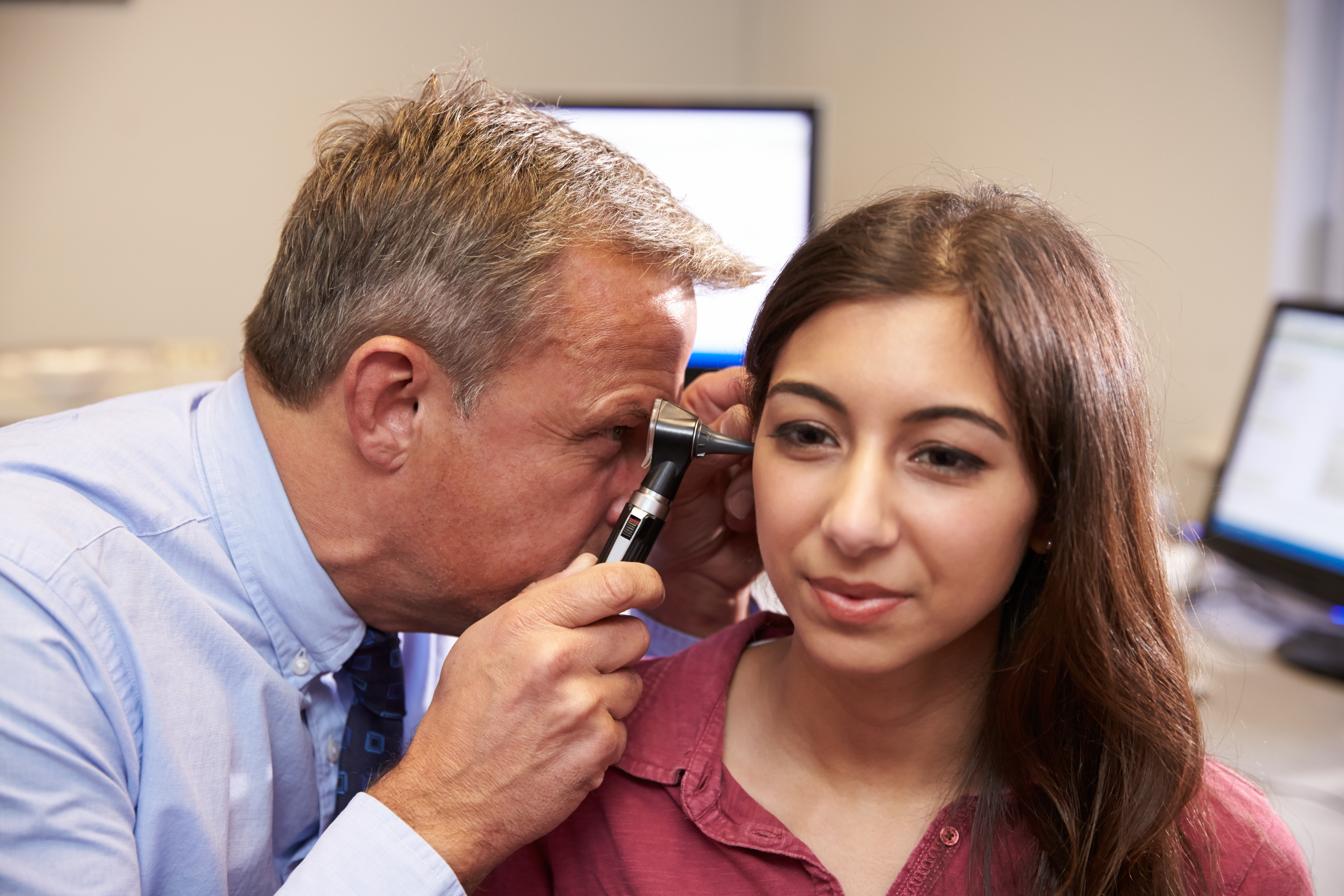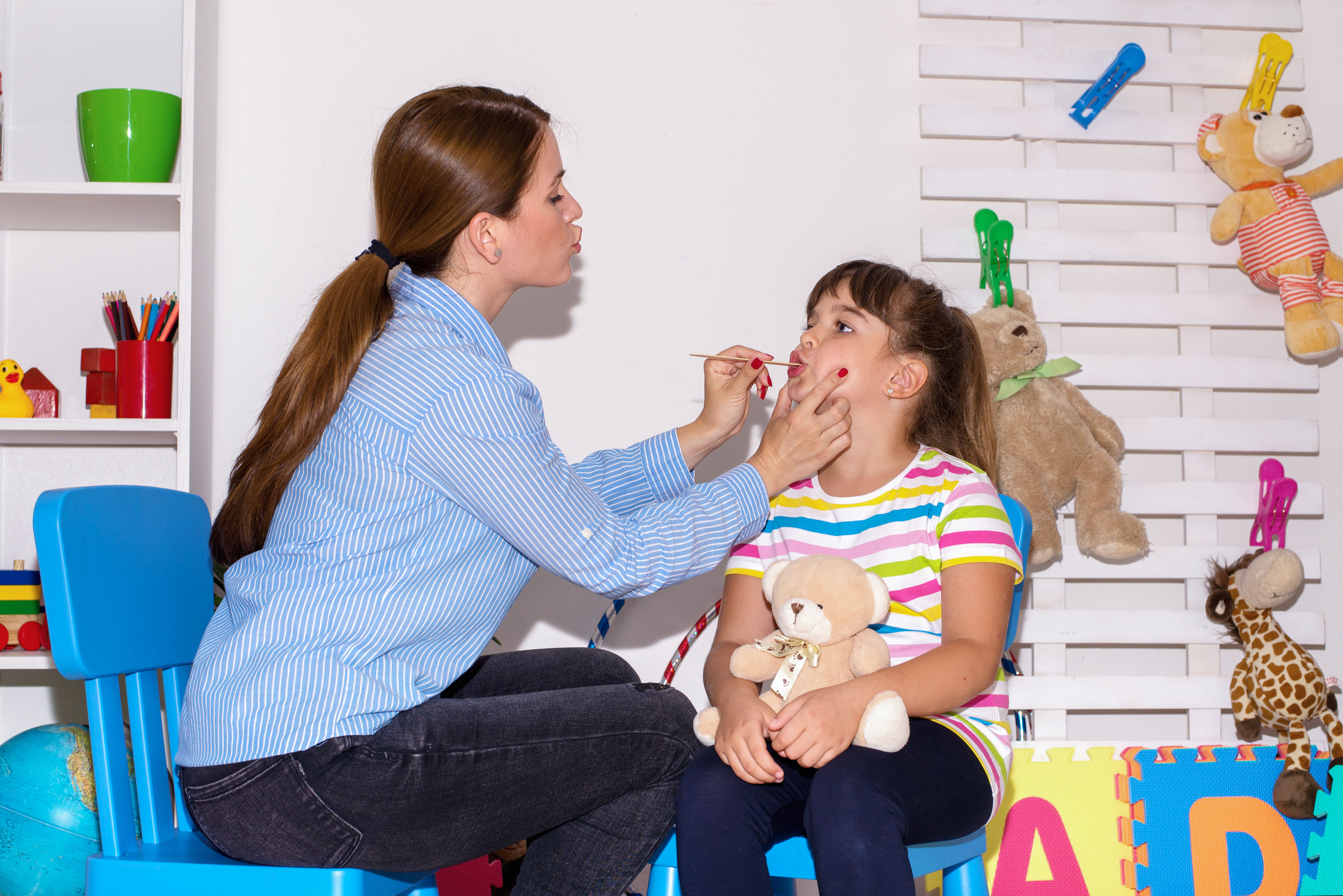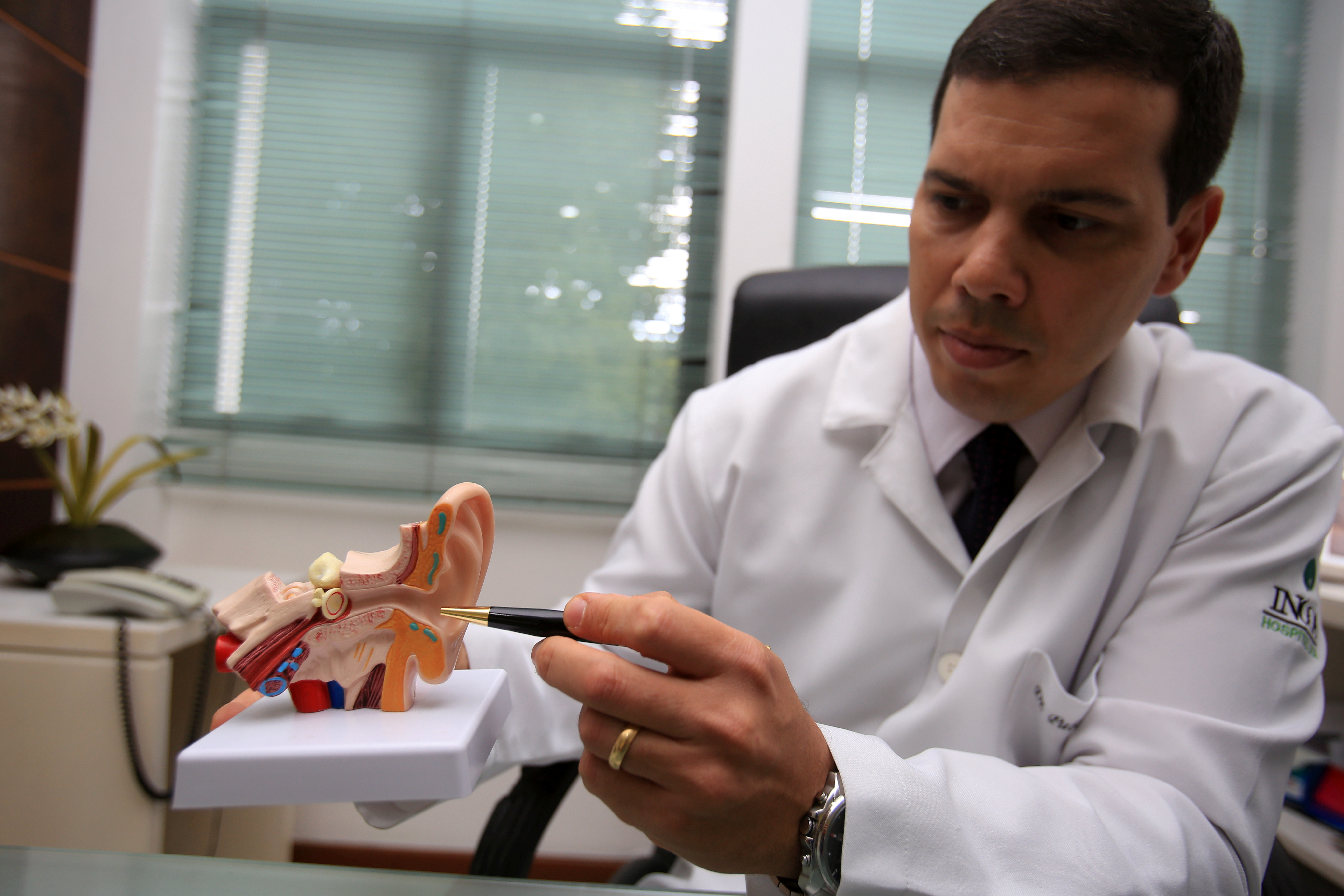-
GeneralGeneral
-
Speech Language Pathology Homepage


Welcome to the Speech-Language Pathology course. This course provides an opportunity to develop knowledge related to the rehabilitation and treatment of various pathologies and disorders of language, speech, and hearing.
Like all NextGenU.org courses, this course is competency-based. Competencies were adapted from the 2020 Certification Standards in Speech-Language Pathology, Assessing and Certifying Clinical Competency, Foundations of Clinical Practice for Audiology and Speech-Language Pathology, and PRAXIS Study Companion Speech-Language Pathology. It uses learning resources from accredited, world-class organizations such as the American Speech-Language-Hearing Association (ASHA), Life-Changing Speech Therapy, the Speech Pathology Graduate Programs, the Mayo Clinic Foundation for Medical Education and Research, the American Speech and Hearing Association, and the Center for Disease Control and Prevention.
This course was developed by Abbie Olszewski, Ph.D., CCC-SLP, a professor in Speech-Language Pathology; and Elsie Batcheller B.S; Morgan Lindsey, B.S.; Sierra Morrow, B.S.; Madison Cox, MSN, RN; Hugo Rojas, MD, MSc; Carolina Bustillos, MD, DiplEd; and Jamila Conliffe, MPH.
For publications on NextGenU.org’s courses’ efficacy, see “A Novel Integration of Online and Flipped Classroom Instructional Models in Public Health Higher Education” (2014), BMC Medical Education, “Building Public Health Capacity through Online Global Learning” (2018), Open Praxis, or the NextGenU.org’s publication page. Subscribe to our newsletter to be notified of future updates, new courses, and to be part of our community.
There are 8 modules to complete, which provide an introduction to:
- Module 1: Introduction to Speech Pathology and Audiology
- Module 2: Articulation & Phonological Disorders
- Module 3: Language Acquisition & Disorders in Children
- Module 4: Special Topics in Speech-Language Pathology
- Module 5: Types of Speech Disorders
- Module 6: Audiology: Hearing and its Disorders
- Module 7: Audiological Rehabilitation and Education
- Module 8: Addictive Habits Related to Speech Pathologies
The completion time for this course is estimated at 77 hours, comprising 18 hours for learning resources, 36 hours for time to study content and assimilation, and 23 hours for participating in quizzes and learning activities, to assist the learners in the synthesis of learning materials. This course is equivalent to 2 credit hours.
This course requires the completion of discussion forums which are needed to complete the course. At the end of each module, there is a practice quiz of ten to twenty (10 to 20) multiple-choice questions. After you’ve completed all of the modules, quizzes, and learning activities, you’ll have access to a final exam consisting of fifty (50) multiple-choice questions and a chance to evaluate this course. The final exam will be designed so that participants can have multiple opportunities to answer correctly until the required score of 70% or higher is obtained. Once you’ve passed the last test, you will be able to download a certificate of completion from NextGenU.org and our course’s co-sponsoring organizations. We keep all of your personal information confidential, never sell any of your information, and only use anonymized data for research purposes. Also, we are happy to report your testing information and share your work with anyone (your school, employer, etc.) at your request.
Engaging with this course:
You may browse this course for free to learn for your personal enrichment; there are no requirements. Register for this course to track your progress and record your grades.
To PASS and Obtain a Certificate
- All reading requirements,
- Complete all quizzes and pass with a 80% with unlimited attempts.
- All discussion forums,
- The final exam with a minimum of 80% and a maximum of 3 attempts.
- The self and course evaluation forms.
To obtain credit:
- Complete all requirements listed above for the certificate, and
- Your learning institution or workplace should approve the partner-university-sponsored NextGenU.org course for educational credit, as they would for their learner taking a course anywhere.
NextGenU.org is happy to provide your institution with:
- A link to and description of the course training, so they can see all its components, including the co-sponsoring universities and other professional organization co-sponsors;
- Your grade on the final exam;
- Your work products (e.g., case study activities) and any other required or optional shared materials that you produce and authorize to share with them;
- Your evaluations -- course, and self-assessments;
- A copy of your certificate of completion, with the co-sponsoring universities and other organizations listed.
To obtain a degree, NextGenU.org co-sponsors degree programs with institutional partners. To obtain a full degree co-sponsored with NextGenU.org, registrants must be enrolled in a degree program as a student of a NextGenU.org institutional partner. If you think that your institution might be interested in offering a degree with NextGenU.org, contact us.
We hope that you will find this a rewarding learning experience, and we count on your assessment and feedback to help us improve this training for future students.
Here are the next steps to take the course and earn a certificate:
- Complete the registration form,
- Take the pre-test,
- Begin the course with Module 1: Introduction to Speech Pathology and Audiology. In each lesson, read the description, complete all required readings and any required activity, as well as take the corresponding quizzes.
-
Module 1: Introduction to Speech Pathology and Audiology

Instructional Goals covered in this module:
- Understand the educational and professional requirements to specialize and operate within the bounds of speech language pathology and audiology based on regulatory and legislative standards within one's jurisdiction.
- Explain the anatomical and physiological aspects necessary for the structures and functions of communication.
- Understand the basic concepts of the communication discipline and key communication disorders across the lifespan.
- Understand the educational and professional requirements to specialize and operate within the bounds of speech language pathology and audiology based on regulatory and legislative standards within one's jurisdiction.
-
Module 1: Lessons 1: A Profile of Speech Language Pathologists (SLPs) and Audiologists.
Student Learning Outcomes:
Upon completion of this lesson, you will be able to:
- Describe the required educational backgrounds and professional practice of speech, language, and hearing scientists, audiologists, and speech-language pathologists.
- Identify the regulatory practice requirements for professions in audiology and speech-language pathology by local agencies and professional organizations.
Approximate time required to complete the readings (at 144 words/minute) and assignments for this lesson: 3 hours and 20 minutes.1 URL, 1 Forum -
Module 1: Lessons 2: Anatomy and Physiology of Speech and Language and basic concepts.
Student Learning Outcomes:
Upon completion of this lesson, you will be able to:- Recognize the meanings of the terms Audiology, Speach, and Language.
- Identify the structures and functions of the central and peripheral nervous systems.
- Recognize each lobe of the brain and its corresponding functions in the cerebrum and cerebellum related to speech or language.
- Explain the process of respiration, phonation, resonation, and articulation for speech language production.
6 URLs, 1 Forum -
Module 1: Lesson 3: Communication and its Disorders.
Student Learning Outcomes:
Upon completion of this lesson, you will be able to:- Recognize the differences between speech disorders, language disorders, and hearing disorders.
- Explain how communication is adversely affected by hearing, speech, and language disorders.
- Recognize the meanings of the terms impairment, disability, handicap, disorder, and difference, and how they affect communication.
- Recognize the difference among these speech and/or language disorders: Aphasia, apraxia of speech, auditory processing disorder, dysarthria, dysphagia, perceptive language disorder, phonological disorder, pragmatic language disorder, and stuttering.
5 URLs, 1 Forum -
Module 2. Articulation & Phonological Disorders
Instructional Goals covered in this module

- Examine the distinctions between articulation disorders and phonological disorders pertaining to human development.
-
Module 2: Lesson 1: Articulation and phonation through the life cycle.
Student Learning Outcomes:
Upon completion of this lesson, you will be able to:- Compare and contrast between articulation and phonological disorders.
- Differentiate between the causes of articulation and phonological disorders in children and adults.
- Distinguish between the major factors contributing to the severity of articulation and phonological disorders.
- Compare and contrast the language disorders that can be related to articulation and phonological disorders in children, including developmental and learning disabilities, hearing disorders, OMD's, cleft palate, dysarthria, and apraxia.
- Compare and contrast the difference between organic and functional articulation and phonological disorders in children.
- Evaluate the treatment measures for different articulation and phonological disorders.
- Assess the factors that contribute to the identification of articulation and phonological disorders, such as referral, formal and informal measures, and information from a language sample.
10 URLs, 1 Forum -
Module 3: Language Acquisition & Disorders in Children

Instructional Goals covered in this module:
- Understand the key processes and systems utilized in communication and the associated disorders.
- Evaluate the key language disorders and the areas of language in children.
- Assess the impact of socialization and acculturation on language development.
-
Module 3: Lesson 1: Communication and Language Disorders.
Student Learning Outcomes:
Upon completion of this lesson, you will be able to:- Summarize how thoughts are created, sent, and received.
- Examine the processes and systems that underlie speech and language development.
- Recognize the service delivery settings with adults including acute care, in-patient rehabilitation, long-term care, and out-patient clinic.
- Explain the different service delivery settings with adults including acute care, in-patient rehabilitation, long-term care, and out-patient clinic.
3 URLs, 1 Forum - Summarize how thoughts are created, sent, and received.
-
Module 3: Lesson 2: Understanding language disorders.
Student Learning Outcomes:
Upon completion of this lesson, you will be able to:- Examine the three main language disorders: expressive language disorder, receptive language disorder, and mixed receptive-expressive language disorder.
- Differentiate among three areas of language and how they can become disordered: form, content, and use.
- Summarize the components needed to conduct an assessment for young children.
- Examine seven communication problems and how they can impact children in school: speech sounds, language and literacy, social communication, cognitive communication, feeding and swallowing, stuttering, and voice.
- Compare and contrast the differences among language disorder, learning disability, and dyslexia.
- Evaluate different aspects of language development that are especially difficult for school-age children with language disorders in the primary and secondary grades.
- Differentiate between the IDEA Part B and Part C in regards to service delivery to children with language disorders.
- Distinguish between the screenings and comprehensive assessments used to evaluate language disorders in students in the primary and secondary grades.
- Distinguish among four common intervention target areas used by speech-language pathologists who treat school-age children (5 to 10) with language disorders.
10 URLs, 1 Forum -
Module 3: Lesson 3: Socialization and Acculturation.
Student Learning Outcomes:
Upon completion of this lesson, you will be able to:- Illustrate the relationship between using, speaking, and understanding the language of a community.
- Illustrate the intricate relationship between culture and communication.
- Differentiate between the processes of socialization and acculturation.
- Examine the implications of a mismatch between the culture of the home and the culture of the school.
- Illustrate how dialects are formed.
6 URLs, 1 Forum -
Module 4: Special Topics in Speech-Language Pathology

Instructional Goals covered in this module:
- Understand the process of oral functions and disorders.
- Understand the impact of neurological disorders on language development and processes.
- Understand the process of oral functions and disorders.
-
Module 4: Lesson 1: Swallowing Disorders.
Student Learning Outcomes:
Upon completion of this lesson, you will be able to:- Summarize the normal processes involved in feeding and swallowing.
- Describe three potential causes of swallowing disorders in children and three in adults.
- Outline the clinical and instrumental procedures that correlate to evaluating dysphagia including: case history, oral mechanism exam, VFSS, FEES, laryngoscopy, and upper endoscopy.
- Outline the speech-language pathologist's role in assessing and the treatment of swallowing disorders in children and adults.
8 URLs, 1 Forum -
Module 4: Lesson 2: Neurological Language Disorders.
Student Learning Outcomes:
Upon completion of this lesson, you will be able to:- Outline the five primary causes of brain damage that result in communication disorders in adults.
- Explain how Broca's, Wernicke's, and global brain damage influences the type of language disorder.
- Explain the communication impact of each of the following language impairments: spoken language expression, spoken language comprehension, written expression, and reading comprehension.
- Explain the characteristics of Broca's, Wernicke's, global, and mixed non-fluent aphasias.
- Explain the following treatment options for aphasia: community aphasia groups, computer-based treatment, multimodal treatment, and conversational coaching.
5 URLs, 1 Forum -
Module 5: Types of Speech Disorders
Instructional Goals covered in this module:

- Understand the characteristics and types of fluency and the impact on speech.
- Understand the characteristics of phonation disorders and their impact on communication.
- Understand the impact of velopharyngeal dysfunction and oral-facial clefts on speech language.
-
Module 5: Lesson 1: Fluency and its Disorders.
Student Learning Outcomes:
Upon completion of this lesson, you will be able to:- Recognize the primary behaviors of stuttering; single-syllable word repetitions, syllable repetitions, sound repetitions, and inaudible sound prolongations.
- Compare the difference between primary and secondary stuttering behaviors.
- Recognize what contributes to the onset, development, and continuity of stuttering.
- Outline the characteristics of chronic stuttering.
- Recognize the following assessments: dysfluency types, frequency of dysfluencies, presence of clusters, duration of dysfluencies, assessment of variability, assessment of psychological reaction and avoidance behaviors, assessment of locus of control of behavior, and assessment of environmental demands and expectations.
- Explain the difference between stuttering-like and non-stuttering-like speech disfluencies.
- Understand the difference between the two primary types of treatment for stuttering: stuttering modification versus fluency shaping.
- Understand how the treatment of children who are beginning to stutter differs from the treatment of adolescents and adults who are chronic stutterers.
7 URLs, 1 Forum -
Module 5: Lesson 2: Voice and its Disorders.
Student Learning Outcomes:
Upon completion of this lesson, you will be able to:- Explain the causes and characteristics of phonation (voice) disorders.
- Recognize aided and unaided augmentative communication systems.
- Explain the causes of both congenital cerebral palsy and acquired cerebral palsy.
- Recognize the diseases that cause dysarthria in adults.
- Describe the 5 perceptual speech characteristics of dysarthria including: respiration, phonation, articulation, resonance, and prosody.
- Compare the differences and similarities of dysarthria in individuals with cerebral palsy and adults with dysarthria.
- Explain the difference between velopharyngeal function, velopharyngeal insufficiency, velopharyngeal incompetence, and velopharyngeal mislearning.
- Explain what a cleft lip or palate is, what can cause it, and the symptoms.
13 URLs, 2 Forums -
Module 6: Audiology: Hearing and its Disorders

Instructional Goals covered in this module:
- Understand the basic concepts of audiology and the hearing impacts.
- Analyze the process for screening, treatment, and diagnosis in audiology.
-
Module 6: Lesson 1: Principles of Audiology.
Student Learning Outcomes:
Upon completion of this lesson, you will be able to:- Understand what the profession of audiology is designed to accomplish.
- Explain what constitutes a hearing loss.
- Describe the following causes of hearing loss and how they contribute to hearing loss: ear infections, injury/trauma, aging, exposure to prolonged or excessive noise, and medications that are toxic to the ear.
- Compare and contrast the following types of hearing loss: conductive, sensorineural, and mixed.
- Describe the difficulties in understanding speech for people with different kinds of hearing loss.
- Explain how to conduct pure-tone testing, speech testing, otoacoustic emissions, and tests of the middle ear.
8 URLs, 1 Forum -
Module 6: Lesson 2: Audiology in Practice.
Student Learning Outcomes:
Upon completion of this lesson, you will be able to:- Outline the purpose of the following instruments or tests when examining hearing: tympanogram, otoscope, otoacoustic emissions machine, and audiometer.
- Examine the purpose of a tuning fork in audiology and how it relates to audiometry when modern tests are not available.
- Examine the purpose of using brainstem auditory evoked responses and otoacoustic emissions.
- Compare and contrast the implications of the various results of the following basic hearing tests: tympanometry, acoustic reflexes, otoacoustic emissions, pure tone audiometry, and speech audiometry.
7 URLs, 1 Forum -
Module 7. Audiological Rehabilitation and Education

Instructional Goals covered in this module:
- Understand the process for speech and language development in children and the impact on communication.
-
Module 7: Lesson 1: Fluency and its Disorders.
Student Learning Outcomes:
Upon completion of this lesson, you will be able to:- Explain how prelinguistic severe to profound deafness affects child development in vocabulary, sentence structure, speaking, academic achievement, and social functioning.
- Understand communication development in deaf children who have parents who are deaf from those with parents who have normal hearing.
- Explain the speech and language development in children with hearing impairments related to vocabulary, sentence structure, and speaking.
- Outline the two types of assessments speech-language pathologists conduct for children with hearing impairments.
- Describe the following intervention services for children with hearing impairments: early intervention, special education, technology, and learning language.
- Understand the communication options available for children with hearing impairments, including the use of speech, listening, writing, and sign communication.
- Explain the concept of "bilingual-bicultural" education for children who are deaf.
9 URLs, 1 Forum -
Module 8. Addictive habits related to speech pathologies

Instructional Goals covered in this module:
- Understand the physiopathology behind organic and functional damage in essential organs for speech and communications.
-
Module 8: Lesson 1 : Substance Use and Speech Disorders and Pathologies.
Student Learning Outcomes:
Upon completion of this lesson, you will be able to:- Describe how problematic use of different substances causes sensory motor alterations in the speech system.
5 URLs -
Module 8: Lesson 2 : Substance Use and Audiological Pathologies.
Student Learning Outcomes:
Upon completion of this lesson, you will be able to:- Assess the different auditory sensorimotor disorders caused by the problematic use of substances.
- Reflect on the relationship between audiology disorders and the use of medications.
5 URLs, 1 Forum -
Course and Self Evaluation & Certificate
 In this section, you can provide feedback about this course to help us make NextGenU.org better. Once evaluations are completed, you will be able to download your certificate of completion.
In this section, you can provide feedback about this course to help us make NextGenU.org better. Once evaluations are completed, you will be able to download your certificate of completion.

